Potrebujeme váš súhlas na využitie jednotlivých dát, aby sa vám okrem iného mohli ukazovať informácie týkajúce sa vašich záujmov. Súhlas udelíte kliknutím na tlačidlo „OK“.
ASTM E681-09(2015)
Standard Test Method for Concentration Limits of Flammability of Chemicals (Vapors and Gases)
Automaticky preložený názov:
Štandardná skúšobná metóda pre koncentračné limity horľavosti chemických látok ( pár a plynov )
NORMA vydaná dňa 1.2.2015
Informácie o norme:
Označenie normy: ASTM E681-09(2015)
Poznámka: NEPLATNÁ
Dátum vydania normy: 1.2.2015
Kód tovaru: NS-586213
Počet strán: 12
Približná hmotnosť: 36 g (0.08 libier)
Krajina: Americká technická norma
Kategória: Technické normy ASTM
Kategórie - podobné normy:
Anotácia textu normy ASTM E681-09(2015) :
Keywords:
ICS Number Code 13.300 (Protection against dangerous goods)
Doplňujúce informácie
| Significance and Use | ||||||||||||
|
5.1 The LFL and UFL of gases and vapors define the range of flammable concentrations in air. 5.2 This method measures the LFL and UFL for upward (and partially outward) flame propagation. The limits for downward flame propagation are narrower. 5.3 Limits of flammability may be used to determine guidelines for the safe handling of volatile chemicals. They are used particularly in assessing ventilation requirements for the handling of gases and vapors. NFPA 69 provides guidance for the practical use of flammability limit data, including the appropriate safety margins to use. 5.4 As discussed in Brandes and Ural,Note 2: For hydrocarbons, the break point between nonflammability and flammability occurs over a narrow concentration range at the lower flammability limit, but the break point is less distinct at the upper limit. For materials found to be non-reproducible per 13.1.1 that are likely to have large quenching distances and may be difficult to ignite, such as ammonia and certain halogenated hydrocarbon, the lower and upper limits of these materials may both be less distinct. That is, a wider range exists between flammable and nonflammable concentrations (see Annex A1). |
||||||||||||
| 1. Scope | ||||||||||||
|
1.1 This test method covers the determination of the lower and upper concentration limits of flammability of chemicals having sufficient vapor pressure to form flammable mixtures in air at atmospheric pressure at the test temperature. This test method may be used to determine these limits in the presence of inert dilution gases. No oxidant stronger than air should be used. Note 1: The lower flammability limit (LFL) and upper
flammability limit (UFL) are sometimes referred to as the lower
explosive limit (LEL) and the upper explosive limit (UEL),
respectively. However, since the terms LEL and UEL are also used to
denote concentrations other than the limits defined in this test
method, one must examine the definitions closely when LEL and UEL
values are reported or used.
1.2 This test method is based on electrical ignition and visual observations of flame propagation. Users may experience problems if the flames are difficult to observe (for example, irregular propagation or insufficient luminescence in the visible spectrum), if the test material requires large ignition energy, or if the material has large quenching distances. 1.3 Annex A1 provides a modified test method for materials (such as certain amines, halogenated materials, and the like) with large quenching distances which may be difficult to ignite. 1.4 In other situations where strong ignition sources (such as direct flame ignition) is considered credible, the use of a test method employing higher energy ignition source in a sufficiently large pressure chamber (analogous, for example, to the methods in Test Method E2079 for measuring limiting oxygen concentration) may be more appropriate. In this case, expert advice may be necessary. 1.5 The flammability limits depend on the test temperature and pressure. This test method is limited to an initial pressure of the local ambient or less, with a practical lower pressure limit of approximately 13 kPa (100 mm Hg). The maximum practical operating temperature of this equipment is approximately 150°C. 1.6 The values stated in SI units are to be regarded as standard. No other units of measurement are included in this standard. 1.7 This test method should be used to measure and describe the properties of materials, products, or assemblies in response to heat and flame under controlled laboratory conditions and should not be used to describe or appraise the fire hazard or fire risk of materials, products, or assemblies under actual fire conditions. However, results of this test method may be used as elements of a fire risk assessment that takes into account all of the factors pertinent to an assessment of the fire hazard of a particular end use. 1.8 This standard may involve hazardous materials,
operations, and equipment. This standard does not purport to address all of
the safety concerns, if any, associated with its use. It is the
responsibility of the user of this standard to establish
appropriate safety and health practices and determine the
applicability of regulatory limitations prior to use.
Standard Test Method for Minimum Ignition
Energy and Quenching Distance in Gaseous Mixtures Standard Terminology Relating to Hazard
Potential of Chemicals Standard Test Method for Minimum
Explosible Concentration of Combustible Dusts Standard Specification for Standard
Atmospheres for Conditioning and Testing Flexible Barrier
Materials NFPA 69 Standard on Explosion Prevention
Systems Standard Test Methods for Limiting Oxygen
(Oxidant) Concentration in Gases and Vapors |
Podobné normy:
Historická
1.5.2013
Historická
1.5.2013
Historická
1.12.2010
Historická
1.7.2011
Historická
1.10.2012
Historická
1.4.2014
Odporúčame:
Aktualizácia zákonov
Chcete mať istotu o platnosti využívaných predpisov?
Ponúkame Vám riešenie, aby ste mohli používať stále platné (aktuálne) legislatívne predpisy
Chcete vedieť viac informácií ? Pozrite sa na túto stránku.


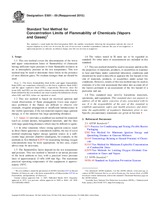
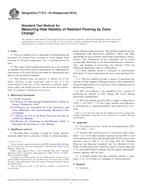 ASTM F1514-03(2013)..
ASTM F1514-03(2013)..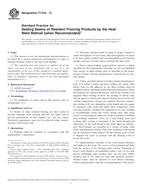 ASTM F1516-13
ASTM F1516-13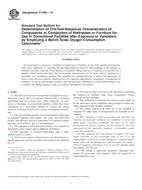 ASTM F1550-10
ASTM F1550-10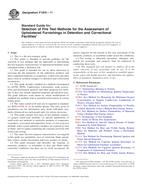 ASTM F1870-11
ASTM F1870-11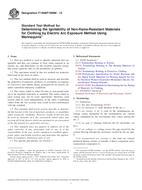 ASTM F1958/F1958M-12..
ASTM F1958/F1958M-12..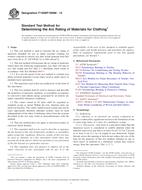 ASTM F1959/F1959M-14..
ASTM F1959/F1959M-14..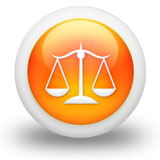
 Cookies
Cookies
